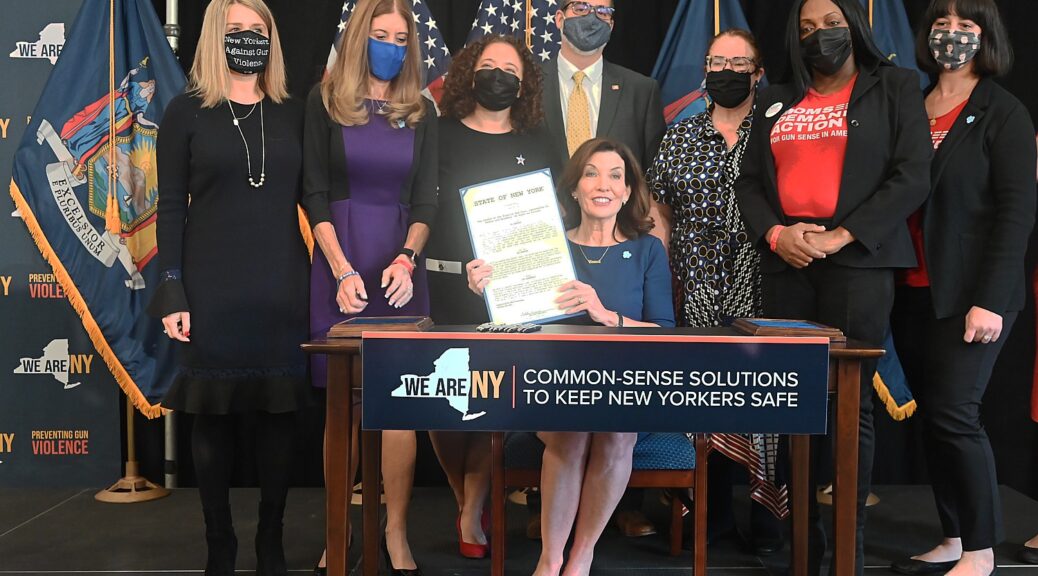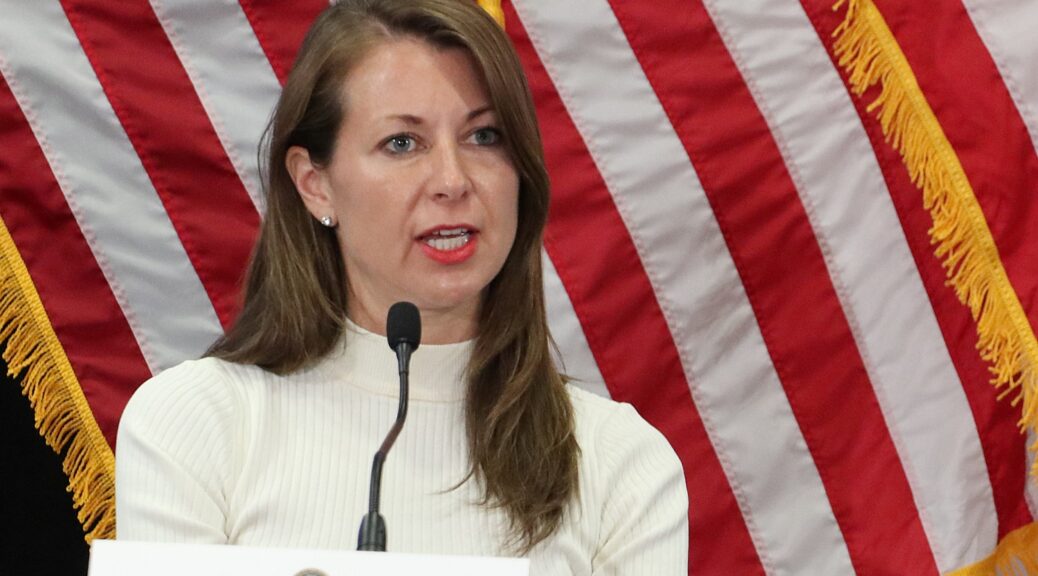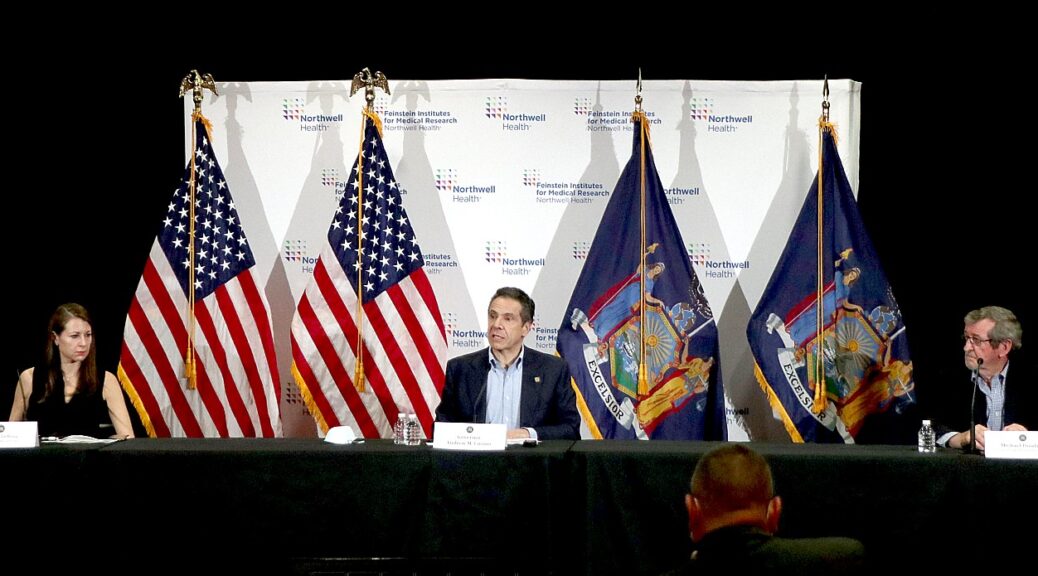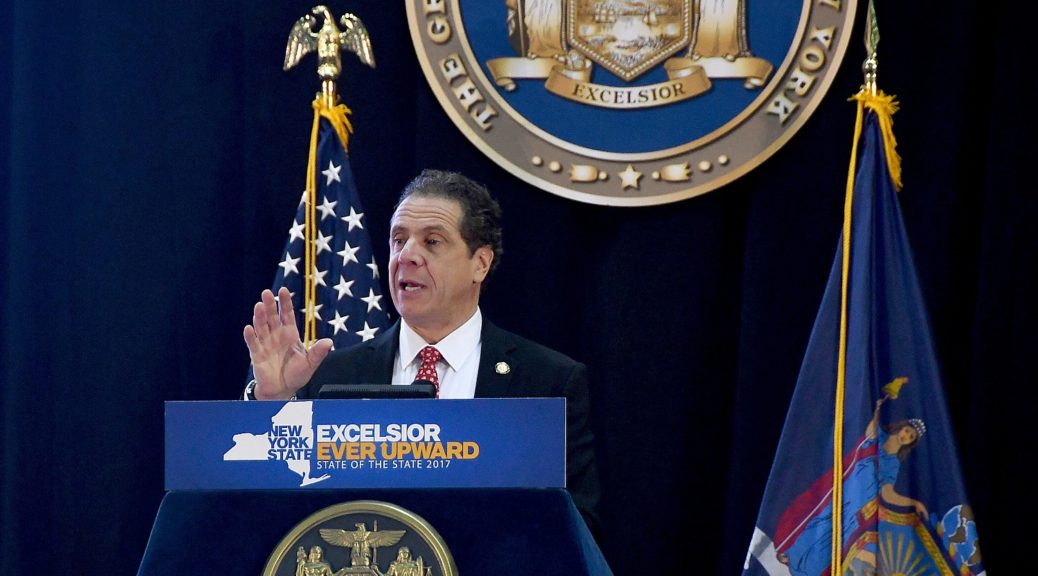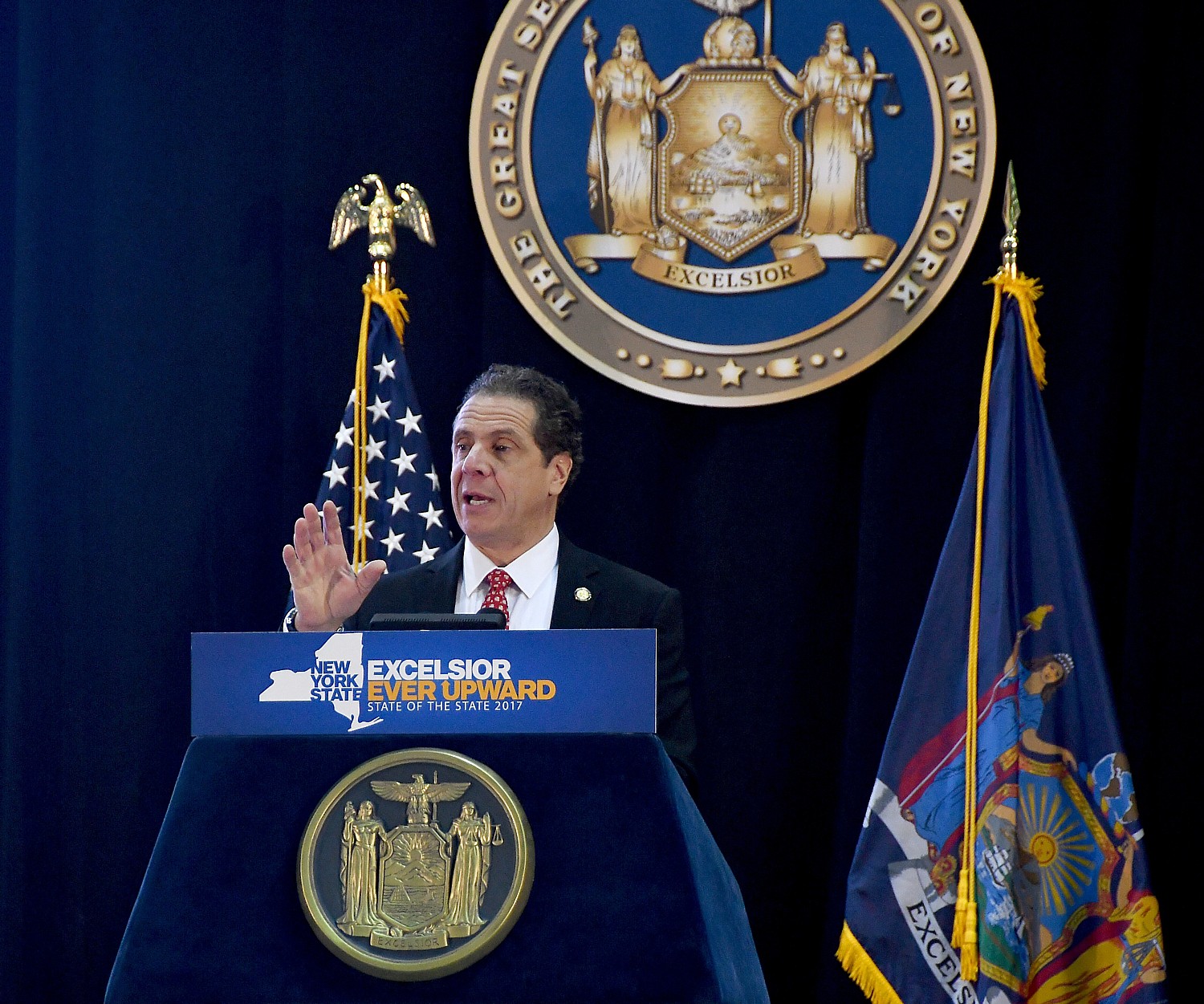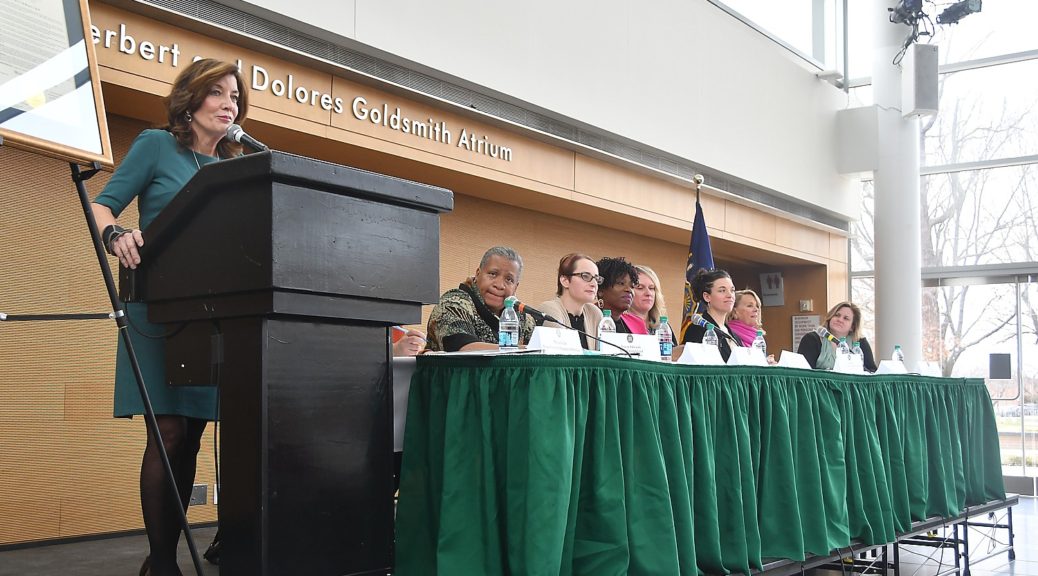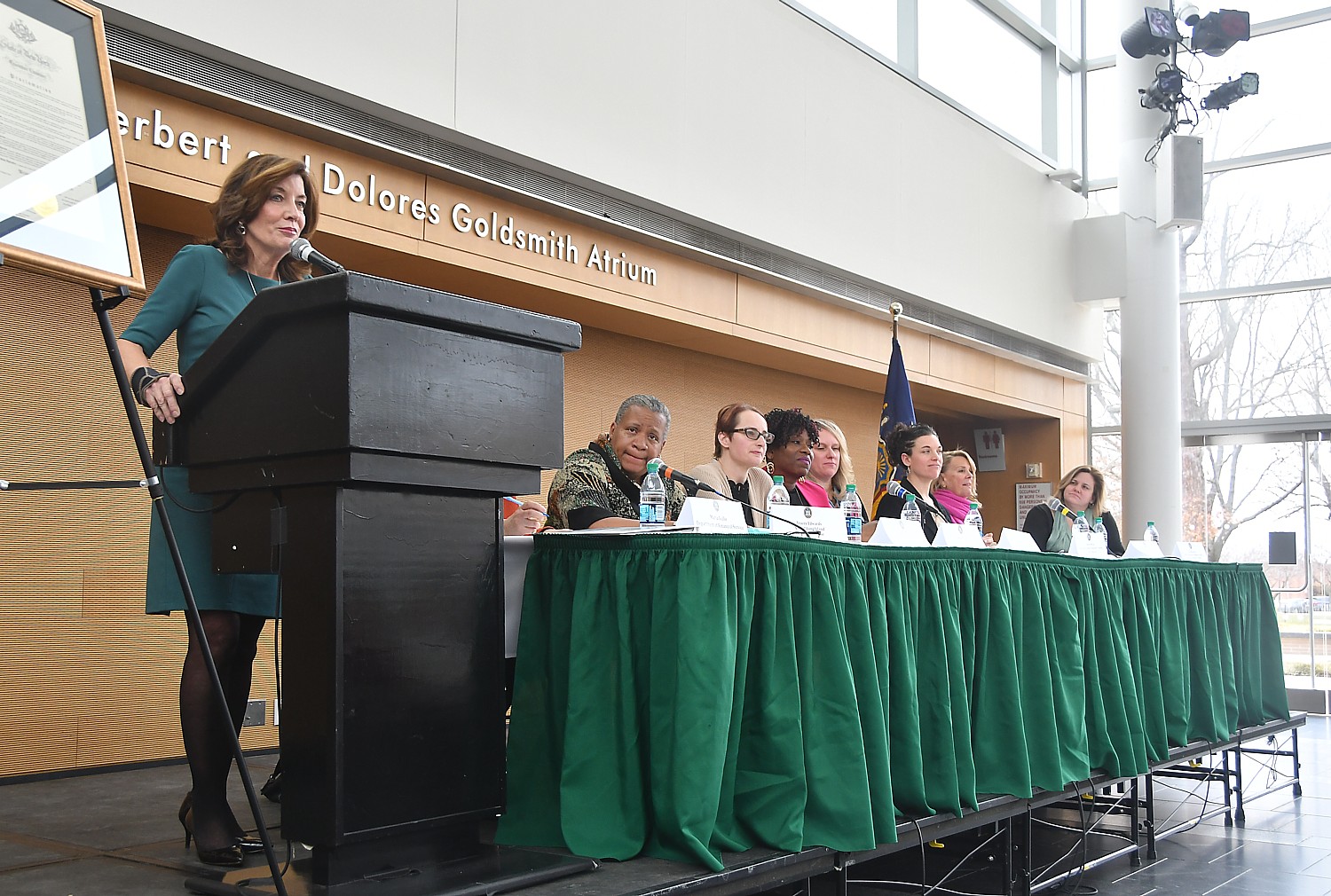Model Policy Outlines Trauma-Informed and Survivor-Centered Best Practices and Procedures for Police Officers and Supervisors That Promote Safety of Victims and Officers, Connect Individuals to Services and Support, and Preserve Evidence of a Crime
Governor Hochul Secures $1 Million Investment to Further Expand the Use of New York State’s Red Flag Law in Situations of Intimate Partner and Gender-Based Violence
Governor Hochul Signs Domestic Violence Prevention Legislation at Meeting with Survivors in Albany
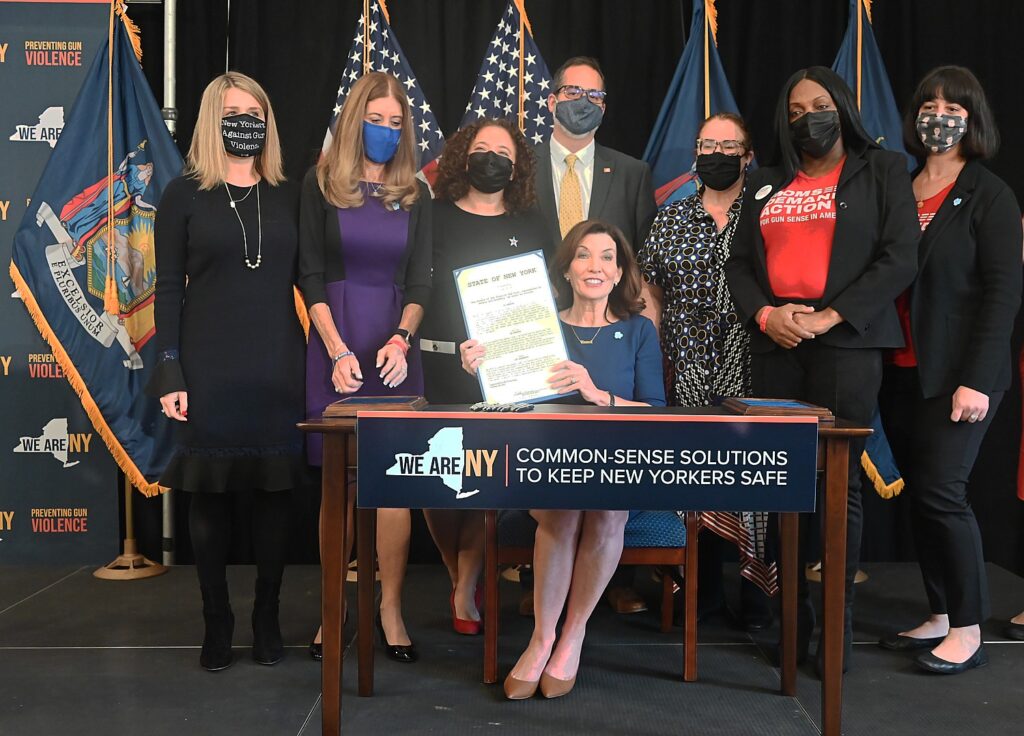
From her earliest days as New York State Governor, Kathy Hochul has been working to address domestic violence and promote safety, signing gun control laws and expanding use of the state’s Red Flag Law. She announced announced new state guidance for police departments and sheriffs’ offices when responding to domestic incidents and secured $1 million to further expand the use of the Red Flag Law in situations of intimate partner and gender-based violence by providing training and technical assistance to community-based organizations so they can facilitate the filing of these potentially life-saving orders. © Karen Rubin/news-photos-features.com
New York State Governor Kathy Hochul announced new state guidance for police departments and sheriffs’ offices when responding to domestic incidents. The state’s Law Enforcement Domestic Incident Model Policy outlines trauma-informed and survivor-centered best practices and procedures for police officers and supervisors to follow, with the goal of promoting safety for victims and officers, connecting individuals to services and support, and preserve evidence of a crime, among other topics. The Governor has secured $1 million to further expand the use of the state’s Red Flag Law in situations of intimate partner and gender-based violence by providing training and technical assistance to community-based organizations so they can facilitate the filing of these potentially life-saving orders. Governor Hochul also signed S.5935/A.5040 and S.5915/A.5347, two new laws related to domestic violence prevention, during a roundtable discussion with survivors in Albany.
“I’m committed to leading an administration that treats survivors with dignity and respect,” Governor Hochul said. “This is personal to me: my mother was a lifelong advocate for victims of domestic abuse, and our family founded a transitional home for survivors in Western New York. These actions build on my administration’s ongoing commitment to help survivors and provide them with the resources, support and information they need to recover and rebuild.”
State Office for the Prevention of Domestic Violence (OPDV) Executive Director Kelli Owens and Safe Horizon Chief Executive Officer Liz Roberts joined Governor Hochul for the roundtable discussion, information from which will inform her administration’s future policies to address domestic and gender-based violence. The goal is to build on the Governor’s establishment of a new flexible funding stream for survivor resources in the FY24 Budget, which also included $5 million in local assistance funding for OPDV to provide direct financial assistance to victims and survivors of domestic violence. October is marked in New York State and the nation as Domestic Violence Awareness Month.
Governor Hochul dramatically expanded use of the state’s Red Flag Law in the aftermath of the 2022 racially motivate murders at the Tops supermarket in Buffalo. Also known as the Extreme Risk Protection Order (ERPO) Law, the law is designed to prevent individuals who show signs of being a threat to themselves or others from purchasing or possessing any kind of firearm, while providing procedural safeguards to ensure that no firearm is removed without due process.
This new, $1 million investment will fund training and technical assistance for community-based organizations so they can help potential ERPO petitioners – family members, school officials, and health and mental health care providers, among others – identify extreme risk behavior and navigate the court process to further increase the use of this critical public safety law. The state Division of Criminal Justice Services (DCJS) and OPDV will work with the state’s 10 Domestic Violence Regional Councils to implement this initiative.
The new Law Enforcement Domestic Incident Model Policy addresses significant shifts in law enforcement policy and practice that have occurred since the state first issued guidance in 2010, as well as an increased understanding of the effects of trauma, the need to assess for lethality factors when responding to these incidents, and the importance of putting victims and survivors at the center of any response and holding individuals who harm accountable for their behavior. The State’s Municipal Police Training Council, to which DCJS provides staff support, adopted the policy after working with subject matter experts in policing, domestic violence prevention and response, and law enforcement training.
“Domestic incidents are among the most common and serious calls agencies receive,” New York State Division of Criminal Justice Services Commissioner Rossana Rosado said. “This comprehensive model policy is designed to provide responding officers with the information, tools, and resources they need to effectively handle these cases. I thank the members of the Municipal Police Training Council and my team at DCJS for their work and commitment to improving policing and how the criminal justice system responds to victims and survivors.”
New York State Office for Victim Services Director Elizabeth Cronin said,“It takes an incredible amount of courage for someone in an abusive relationship to seek help from the police. Once they take that step, even making that call can cause a dangerous situation to escalate, so it’s critically important that police officers have the best information, training, and skills when they respond. I thank Municipal Police Training Council members for their leadership and urge all police agencies take advantage of this important guidance.”
In addition to announcing the availability of this critical guidance for law enforcement and funding to expand the use of the state’s Red Flag Law, Governor Hochul signed legislation S.5935/A.5040 enacting the “Hope Card Act” that directs the state Office of Court Administration to develop a program to issue cards containing information of a final order of protection at no cost to individuals. This will empower and enable survivors to enforce their orders of protection without carrying, and risk losing, their official copies. New York is the sixth state to implement a Hope Card program.
The Governor also signed legislation S.5915/A.5347 requiring the State Office for the Prevention of Domestic Violence to distribute informational materials on economic abuse. According to the National Coalition Against Domestic Violence, more than 90 percent of survivors of domestic violence have suffered economic abuse, but many people do not see themselves as being in an abusive relationship if they are not being physically harmed. Informational materials for victims and survivors of domestic- and gender-based violence will include connections to housing resources, local social service offices, and more to help individuals attain safety and stability.
“Economic abuse – like so many forms of domestic violence – is overlooked, underreported, and sometimes difficult to recognize,” State Senator Kristen Gonzalez said. “By requiring the Office of the Prevention of Domestic Violence to distribute informational materials on a form of domestic violence that is near ubiquitous in abusive relationships, this bill will empower survivors of economic abuse to recognize economic abuse in its many forms and give them the tools they need to find help. We thank the Governor for signing this bill into law, and for promoting more trauma-informed responses to domestic violence.”
Assemblymember Linda B. Rosenthal said,”Economic abuse is an invisible form of domestic violence, making it increasingly important that we shine a light on this dangerous practice. Despite being lesser known, economic abuse is extremely common, impacting more than 90% of domestic violence survivors. When a person is trying to leave a dangerous situation, the last thing they should have to worry about is how they will afford to rebuild their life or if their credit has been destroyed by their abuser. I thank Governor Hochul for signing my legislation to make informational materials available to survivors statewide so that they can recognize economic abuse and know where to turn for help.”
The Model Policy addresses changes in law enforcement practice, updates to state law, including the Red Flag Law, and ways for the law enforcement response to be more survivor centered, including:
- Assessing potential lethality to a victim by asking questions about their partner’s access to guns or threats to harm themselves or others, prior incidents of strangulation, harm experienced during pregnancy, jealously and escalating violence. If an individual answers yes to these questions, the guidance provides officers with detailed information about the next steps they should take, including immediately connecting the victim with safety planning by calling a state or local domestic violence hotline or arranging for an advocate to arrive on scene; obtaining evidence from all possible sources, such as phone records, video, and license plate readers, not solely the victim; and consult with prosecutors prior to arraignment if an individual has been charged in connection with the incident.
- Determining if it is necessary to obtain an ERPO to remove any firearms from the home if the alleged abuser poses a danger to the victim, themselves, or others. The Municipal Police Training Council also has an Extreme Risk Protective Order Model Policy and DCJS has provided training on the topic to assist law enforcement professionals with this assessment and their responsibilities under the law.
- Using the individual’s own words when documenting the incident, rather than drawing conclusions: “I can’t sign this or he’ll kill me,” instead of characterizing the statement, such as “victim refused to cooperate.” Police officers must complete a New York State Domestic Incident Report, whether or not an offense occurred, or an arrest is made.
- Notifying individuals about the availability critical civil legal services so they can obtain orders of protection, and assistance with custody and housing, among other legal matters resulting from their victimization.
- Understanding how the effects of trauma and coercive control may result in victims and survivors of domestic violence being hesitant to say what happened, list events in illogical order, and fear authority figures or that police involvement may subject them to future harm.
- Using body-worn cameras, which may affect a victim’s willingness to provide information. If a victim requests an officer stop recording, that request should be documented on camera before the recording is deactivated.
Police departments and sheriffs’ offices are not required to adopt the Law Enforcement Domestic Incident Model Policy: It is designed so each agency can develop their own policies and procedures to best serve the unique needs of their community. Development of model policies is a core function of the Municipal Police Training Council, which also establishes requirements for statutorily mandated police and peace officer basic training in New York State, and police and peace officer instructor certifications, among other responsibilities.
New York State’s Domestic and Sexual Violence Hotline provides free, confidential support 24/7 and is available in most languages: 800-942-6906 (call), 844-997-2121 (text) or @opdv.ny.gov (chat). Individuals also can visit OVS Resource Connect to find a victim assistance program in their community. The Office of Victim Services funds and supports 239 victim assistance programs across the state that provide essential services, such as crisis counseling, support groups, case management, emergency shelter, civil legal help, and relocation assistance, among other assistance, to victims and survivors of domestic violence, sexual assault and other crimes, and their families. The agency also provides a critical financial safety net for individuals who have no other resources to pay for expenses they incurred because of the crime.
The New York State Division of Criminal Justice Services is a multifunction criminal justice support agency with a variety of responsibilities, including law enforcement training; collection and analysis of statewide crime data; maintenance of criminal history information and fingerprint files; administrative oversight of the state’s DNA databank, in partnership with the New York State Police; funding and oversight of probation and community correction programs; administration of federal and state criminal justice funds; support of criminal justice-related agencies across the state; and administration of the State’s Sex Offender Registry. Follow the agency on Facebook, Instagram and X (formerly Twitter).
The New York State Office for the Prevention of Domestic Violenceis the country’s only executive level state agency dedicated to the issue of gender-based violence. Follow the agency on Facebook, Instagram and X (formerly Twitter).
Safe Horizon is the nation’s largest nonprofit victim assistance organization. Based entirely in New York City, Safe Horizon offers a client-centered, trauma-informed, anti-racist response to 250,000 New Yorkers each year who have experienced violence or abuse.

